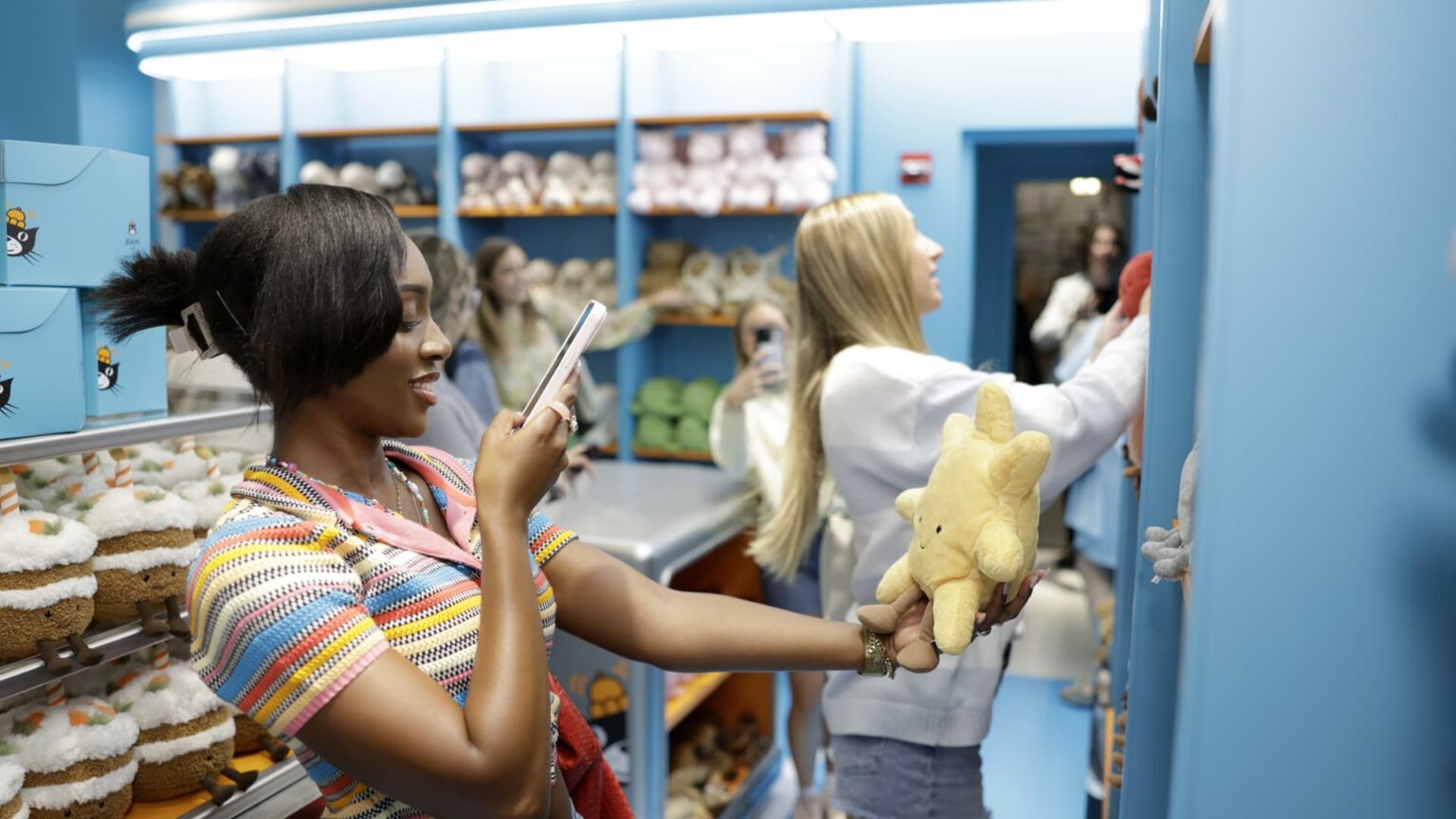The beloved British toy company Jellycat has seen a remarkable surge in profits, driven by a broadening interest among adults for comfort in the form of soft toys. Founded in London in 1999, Jellycat reported over double its profit for the year 2024, amidst a growing trend dubbed the “kidult” phenomenon. This trend, influenced by nostalgia and emotional support, has resonated globally, particularly among the Gen Z population.
| Article Subheadings |
|---|
| 1) Tremendous Growth in Financial Performance |
| 2) Expanding Global Market Reach |
| 3) The Rise of the ‘Kidult’ Trend |
| 4) The Impact of Social Media on Sales |
| 5) The Future of Jellycat and the Toy Industry |
Tremendous Growth in Financial Performance
Jellycat has recently reported outstanding financial results, marking a year of remarkable growth. In 2024, the company’s profits before tax skyrocketed to £139 million, more than doubling from £67 million in 2023. This surge is attributed to an impressive 66% increase in revenue, rising from £200 million in the previous year to an impressive £333 million. The financial reports extensively analyzed by industry experts revealed solid underlying demand for Jellycat’s products. The firm’s success reflects not just strong sales, but also a strategic focus on meeting evolving consumer needs—particularly among adult customers seeking comfort items amid global uncertainties.
Expanding Global Market Reach
With its products distributed in approximately 8,000 shops across 80 countries, Jellycat is making significant strides in the global toy market. The company’s strategy incorporates retail partnerships with prestigious department stores, including Selfridges and Harrods in London, and Galeries Lafayette in Paris. The demand for Jellycat products has particularly surged in Europe, China, and the United States, indicating a promising trend for continued international expansion. As more individuals discover the comforting appeal of plush toys, Jellycat is well-positioned to cater to this growing demand by increasing its presence in key international markets.
The Rise of the ‘Kidult’ Trend
The fuel behind Jellycat’s remarkable growth can be linked to emerging ‘kidult’ culture—a phenomenon characterized by adults embracing their childhood interests and seeking comfort through toys. Significantly, Jellycat’s viral hits like the $30 Labubu doll underscore this trend, resonating with a diverse consumer base. Analysts have identified that adult toy purchases have risen substantially due to emotional and mental health benefits. As studies reveal that nostalgia-driven purchases are becoming increasingly common, manufacturers like Jellycat are harnessing this consumer sentiment to market their products effectively.
The Impact of Social Media on Sales
Jellycat’s strong digital presence has undoubtedly played a crucial role in its sales performance. With over 2.1 million followers on TikTok and 20 million posts under the hashtag #jellycathaul, the brand has engaged effectively with its audience through social media platforms. Videos showcasing adults flaunting their Jellycat collections have contributed to building a community around the brand, generating excitement and encouraging purchases. Through influencer partnerships and engaging content, Jellycat has successfully tapped into the massive online toy market, appealing to both seasoned collectors and new customers.
The Future of Jellycat and the Toy Industry
Looking forward, Jellycat aims to expand its product range while innovating its marketing strategies. With the ongoing popularity of plush toys among both adults and children, Jellycat plans to enhance its “Jellycat Experiences,” which include unique interactive store events and exclusive product launches. The firm is also well-prepared to adapt to changing market demands by focusing on product quality and emotional connection, factors that contribute substantially to its appeal. Such initiatives ensure Jellycat remains a leader in the ever-evolving toy industry.
| No. | Key Points |
|---|---|
| 1 | Jellycat’s profits more than doubled in 2024, reaching £139 million. |
| 2 | The company’s revenue surged 66%, now totaling £333 million. |
| 3 | Significant growth in demand observed particularly in Europe, China, and the U.S. |
| 4 | The ‘kidult’ trend highlights adult purchasing behaviors focusing on comfort. |
| 5 | Social media platforms have contributed significantly to market engagement. |
Summary
In summary, Jellycat’s financial success reflects not only its effective product strategy but also a seismic shift in consumer behavior towards nostalgia and emotional comfort. The rise of the ‘kidult’ trend continues to bolster the company’s market position, ensuring that it remains a key player in the toy industry for years to come. By harnessing social media’s reach and enhancing its global presence, Jellycat is poised for even greater success as it navigates the challenges and opportunities ahead.
Frequently Asked Questions
Question: What factors contributed to Jellycat’s profit growth in 2024?
Jellycat’s profit growth has been attributed to increased adult demand for comfort items in the form of plush toys, driven by the “kidult” trend and effective marketing strategies.
Question: How has social media impacted Jellycat’s brand awareness?
Social media platforms like TikTok have significantly enhanced Jellycat’s brand awareness, allowing the company to engage directly with its audience and generate excitement around its products.
Question: What are ‘Jellycat Experiences’?
‘Jellycat Experiences’ are interactive events that the company hosts in select stores, designed to engage customers and enhance the shopping experience around their product offerings.


